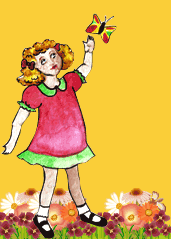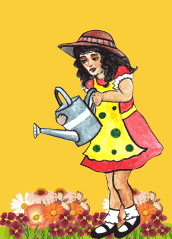 |
|
 |
|
|
VTG CALIFORNIA ARTIST JEANNE OCKER LUCITE PAPERWEIGHT DESK TOP CURIO PAPER ROSE
|
|
GREETINGS, FEEL FREE
TO
"SHOP NAKED."©

We deal in items we believe others will enjoy and want to purchase.
We are not experts.
We welcome any comments, questions, or concerns.
WE ARE TARGETING A GLOBAL MARKET PLACE.
Thanks in advance for your patronage.
Please Be sure to add WDG to your favorites list!
NOW FOR YOUR VIEWING PLEASURE…
JEANNE OCKER
ORIGINAL ART / OA
OOAK / ONE OF A KIND
LUCITE FILLED PAPERWEIGHT
DESKTOP DECORATIVE
MONTERERY PENINSULA, CA
MEASURES ABOUT 70mm X 45mm
HOUSES A RED 'PAPER' ROSE
ORIGINAL PAPER LABEL
AFFIXED UNDERSIDE
CIRCA 1955 - 1960
---------------------
FYI
Jeanne Ocker
Jeanne A. Ocker was born in Los Angeles, California in 1922. She studied with artists Frank Myers, George Post, Robert E. Wood and Bud Shackelford.
Ocker exhibited through the Monterey Peninsula and Central California, including: The Santa Cruz Art League Statewide Competition, Monterey County Fair, Pacific Grove Annual Watercolor Shows, San Francisco Hall of Flowers, and the Naval Post Graduate School in Monterey. She has been an award winner at the Monterey County Fair.
Submitted June 2005 by Gary Stanley/ArtSanDiego:
Source:
Lee Harbick, "Art & Artists of the Monterey Peninsula"
------------------------------------------
Fine glass paperweights are widely produced, collected, and appreciated as works of art and are often exhibited in museums as examples of fine glass art. They are made entirely of glass by sole artisans, or factories, usually in limited editions. They first began to be produced, especially in France, in about 1845, but began a sustained revival and rise in popularity in the middle of the twentieth century.
Essence of paperweights
Decorative glass paperweights fit easily into the hand and are actually meant to be handled and viewed from various directions through the dome, which acts like a lens to make the design change in its appearance with its movements in an attractive way. A magnifying glass is often used to gain appreciation of the fine detail of the work within.
They have a flat or slightly concave base on which they stably rest, and a domed top, which may be faceted or cut. The glass is usually lead glass. The dome may be coated with one or more thin layers of colored glass, and have windows cut through it to reveal the interior motif. The exact shape or profile of the dome varies somewhat from one artist or factory to another, but in fine examples will be tuned to the subject within to show it off to best advantage. The base may be frosted, but is more often polished. They may also be cut in one of several variations. Star-cut bases have a multi-pointed star, while a diamond cut base has grooves cut in a criss-cross pattern. A footed weight has a flange in the base.
The ground on which the inner parts rest may be clear or colored, made of unfused sand, or resemble lace (latticinio).
Paperweights are made by sole artisans, and in factories where many artists and technicians collaborate. Both may produce inexpensive as well as "collector" weights. Workmanship, design, rarity, and condition determine the value of a paperweight. They range in price from a few dollars, to a record $258,500 once paid for an antique French weight. Antique weights, of which perhaps 10,000 or so survive (mostly in museums), generally appreciate steadily in value.
Visible flaws, such as bubbles, striations and scratches affect the value. Glass should not have a yellow or greenish cast, and there should be no unintentional asymmetries, or unevenly spaced or broken elements. Generally, larger weights are more costly and desirable. In a modern piece, an identifying mark and date are imperative.
History
Antique paperweights were made in the "classic" years between 1845 and 1860 primarily in three French factories named Baccarat, St. Louis, and Clichy. They made between 15,000 to 25,000 weights in the classic period. Weights (mainly of lesser quality) were also made in the United States, United Kingdom, and elsewhere, though Bacchus (UK) and New England Glass Company (US) produced some that equaled the best of the French. Modern weights have been made from about 1950 to the present.
In the US, Charles Kaziun started in 1940 to produce buttons, paperweights, inkwells and other bottles, using lamp-work of elegant simplicity. In Scotland, the pioneering work of Paul Ysart from the 1930s onward preceded a new generation of artists such as William Manson, Peter McDougall, Peter Holmes and John Deacons. A further impetus to reviving interest in paperweights was the publication of Evangiline Bergstrom's book, Old Glass Paperweights, the first of a new genre.
A number of small studios appeared in the middle 20th century, particularly in the US. These may have several to some dozens of workers with various levels of skill cooperating to produce their own distinctive "line". Notable examples are Lundberg Studios, Orient and Flume, Correia Art Glass, St.Clair, Lotton, and Parabelle Glass.
In the late 1960s and 1970s, artists such as Paul Stankard, his former assistant, Jim D'Onofrio, Chris Buzzini, Delmo and daughter Debbie Tarsitano, Victor Trabucco and sons, Gordon Smith, Rick Ayotte and his daughter Melissa, and the father and son team of Bob and Ray Banford, began breaking new ground and were able to produce fine paperweights rivaling anything produced in the classic period.
Types of glass paperweights
Collectors may specialize in one of several types of paperweights, but more often they wind up with an eclectic mix.
Millefiori (Italian-thousand flowers) paperweights contain thin cross-sections of cylindrical composite canes made from colored rods and usually resemble little flowers, although they can be designed after anything, even letters and dates. These are usually made in a factory setting. They exist in many variations such as scattered, patterned, close concentric or carpet ground. Sometimes the canes are formed into a sort of upright tuft shaped like a mushroom that is encased in the dome. The year of manufacture is sometimes enclosed into one of the canes.
Lampwork paperweights have objects such as flowers, fruit, butterflies or animals constructed by shaping and working bits of colored glass with a gas burner or torch and assembling them into attractive compositions, which are then incorporated into the dome. This is a form particularly favored by studio artists. The objects are often stylized, but may be highly realistic.
Sulfide paperweights have an encased cameo-like medallion or portrait plaque made from a special ceramic that is able to reproduce very fine detail. They often are produced to commemorate some person or event. Although still produced today their heyday was before the classic period.
Swirl paperweights have opaque rods of two or three colors radiating like a pinwheel from a central millefiori floret. A similar style, the marbrie, is a millefiori containing weight that has several bands of color close to the surface that descend from the apex in a looping pattern to the bottom of the weight.
Another variation is the Crown weight. It has twisted ribbons, alternately colored and lacy white, which radiate from the crown from a central millefiori floret down to converge again at the base. This was first devised in the Saint Louis factory and remains popular today.
Miniature weights have a diameter of less than two inches or so, and magnums have a diameter greater than about 3.25 inches.
California-style paperweights are made by "painting" the surface of the dome with colored molten glass (torchwork), and manipulated with picks or other tools. They may also be sprayed while hot with various metallic salts to achieve an iridescent look.
Victorian portrait and advertising paperweights were dome glass paperweights first made in Pittsburgh, Pennsylvania using a process patented in 1882 by William H. Maxwell. The portrait paperweights contained pictures of ordinary people reproduced on a milk glass disk and encased within clear glass. This same process was also used to produce paperweights with the owner's name encased or an advertisement of a business or product. Pittsburgher Albert A. Graeser, patented a different process for making advertising paperweights in 1892. The Graeser process involved sealing an image to the underside of a rectangular glass blank using a milkglass or enamellike glaze. Many paperweights of the late 19th century are marked either J. N. Abrams or Barnes and Abrams and may list either the 1882 Maxwell or 1892 Graeser patent date. It has been theorized that Barnes and Abrams did not actually manufacture advertising paperweights for their customers, but instead subcontracted the actual manufacturing task out to Pittsburgh area glasshouses. The Paperweight Collectors Association Annual Bulletins published for 2000, 2001 and 2002 describe these in detail.
Bohemian paperweights were particularly popular in Victorian times. Large engraved or cut hollow spheres of ruby glass were a common form.
Museum collections
The United States has a number of museums exhibiting outstanding paperweight collections. Many collectors consider the finest of these to be the Arthur Rubloff collection at the Art Institute of Chicago, who expanded their exhibition in 2012. The Bergstrom-Mahler Museum in Neenah, Wisconsin, exhibits the Evangeline Bergstrom collection. The Corning Museum of Glass in Corning, New York, exhibits the Amory Houghton collection. The Yelverton Paperweight Centre in Devon, England, a collection of over 1,000 paperweights, closed in 2013.
Another museum with a notable exhibition of outstanding American paperweights is in the Museum of American Glass at the Wheaton Arts and Cultural Center in Millville, New Jersey. In 1998, Henry Melville Fuller donated 330 twentieth century paperweights to the Currier Museum of Art in Manchester, New Hampshire.
Paperweight collectors
There are many paperweight collectors worldwide. Several collectors associations hold national or regional conventions, and sponsor activities such as tours, lectures, and auctions. Famous collectors include such literary figures as Colette, Oscar Wilde and Truman Capote. Empress Eugenie (Napoleon III's wife), Empress Carlotta (wife of Maximilian I of Mexico) and Farouk, King of Egypt were also avid collectors. The collecting histories of Rubloff, Bergstrom, and Houghton were similar. They each had two things in common — first, a passion for their collecting, and second, the privilege of having sufficient financial resources to build extensive collections of very rare and expensive weights. It is interesting to recognize that with all their wealth and exposure to other art-forms, they chose to collect paperweights — a personal endorsement of this art-form.

(THIS PICTURE FOR DISPLAY ONLY)
---------------------------
Thanks for choosing this sale. You may email for alternate payment arrangements. We combine shipping. Please pay promptly after the auction. The item will be shipped upon receipt of funds. Also, INTERNATIONAL CUSTOMS is the international buyers obligation and must be aware of their own customs laws. We cannot be responsible for seized or quarantine purchases. If your shipping costs seems high, it is because we ensure that your purchase is well packed, quickly delivered, and insured to arrive safe and sound. WE ARE GOING GREEN, SO WE DO SOMETIMES USE CLEAN RECYCLED MATERIALS TO SHIP. .
Please leave feedback when you have received the item and are satisfied. Please respond when you have received the item.
*****
5*'s
*****
If you were pleased with this transaction, please respond with all 5 stars! If you are not pleased, let us know via e-mail. Our goal is for 5-star service. We want you to be a satisfied, return customer.
Please express any concerns or questions. More pictures are available upon request. The winning bid will incur the cost of S/H INSURED FEDEX OR USPS. See rate calculator or email FOR ESTIMATE. International Bidders are Welcome but be mindful if your country is excluded from safe shipping.
Thanks for perusing THIS and ALL our auctions.
Please Check out our other items!
WE like the curious and odd.
BUY, BYE!!
i
|
|
|
|
|
|
 |
|
 |
|
|

